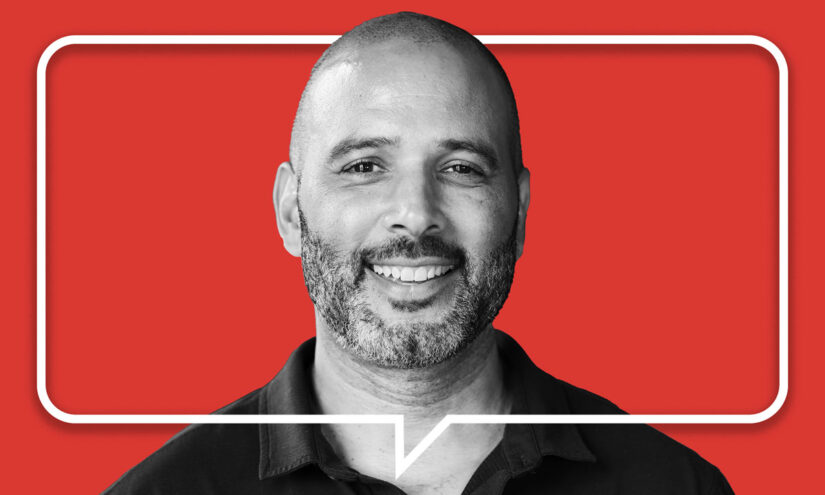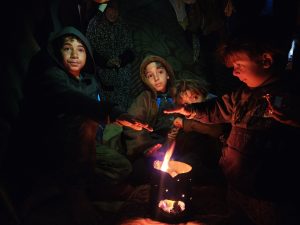Get stories like this delivered straight to your inbox. Sign up for The 74 Newsletter
After a natural disaster like the Los Angeles wildfires, teachers are often a first line of support for children processing trauma — but teachers can also experience what expert Stephen Hydon calls secondary traumatic stress.
In this interview, Hydon, who serves as the director of the School and Educational Settings specialization program at USC’s Dworak-Peck School of Social Work, shares insights on the impact of secondary trauma on educators. Hydon, who has also been a consultant for the U.S. Department of Education, served as president of the American Council on School Work, and led the co-development of an online educator curriculum on secondary traumatic stress with other experts in the field. He’s traveled across the country and world to train schools on secondary traumatic stress, many of which were impacted by natural disasters.
This conversation has been edited for length and clarity.
What is secondary trauma, and how have you seen it manifest in teachers?
Secondary traumatic stress is like PTSD, but it’s not your trauma. It’s the trauma of someone that you’re working with. In this case, students. Teachers might hear about neglect, abuse, food insecurity, and they’re exposed to it every day. And so they start to show symptoms that are kind of PTSD symptoms. They can’t sleep, or they avoid certain areas or they’re hyper-vigilant. Sometimes it can make them question whether or not they can stay in the profession.
I’ve had teachers say to me, “I just don’t think I can do this anymore.”
What can teachers do to take care of themselves when experiencing secondary trauma?
Self-care is so important, but sometimes it’s hard for teachers because they’re givers. They’re taking care of their students, their families, and sometimes it’s hard to take care of themselves.
We know that taking care of well-being across life domains — environmental, social, financial, cognitive and spiritual wellbeing can help mitigate the impact of secondary traumatic stress. Taking advantage of vacation, taking your lunch breaks, actually enjoying a good meal, going for a walk outside, making sure you’re checking in–all those things can help remind us that we’re going to be okay. And yes, I might have experienced secondary trauma, but it too will pass.
One thing I’ve seen work really well is groups of teachers coming together for support. In Joppa, Missouri, they had [what they called] The Breakfast Club, where they walked together before school, wore comfortable shoes, and made a rule that they couldn’t talk about work. They’d talk about dinner plans, their weekends—things that weren’t work-related.
It’s also about finding little moments in the day. Taking a breath. Stepping outside. Even just having a quiet moment to yourself can help. Teachers need to give themselves permission to take a break, even if it’s just for five minutes.
What can schools do to better support teachers?
There’s a concept out there called trauma-informed or trauma-responsive schools. It is that everybody in the school is aware of how trauma can impact us. So it’s teachers, it’s bus drivers, coaches. It’s the custodial staff. Everybody in that school knows that trauma can impact all of us in certain ways, and so to be trauma-responsive is to understand that, “Hey, trauma happens. It’s inevitable. It’s going to happen. It’s happened in the past, and it’s going to happen in the future. So let’s be ready. Let’s be understanding. Let’s be gentle. Let’s be aware. Let’s have spaces to bring people together to talk about something.”
Is there anything else you think people should know about secondary trauma among teachers in areas affected by the Palisades, Eaton, and other fires?
The districts I work with, whether they’re local or regional or national, they’ve been fantastic. When I think of the districts over here—Pasadena, South Pasadena, and LA Unified—I mean, these districts understand crisis response and emergency response and trauma. They’re trained, they’re good at it and they know what they’re doing.
We should feel safe that our students are going to be taken care of, and that’s important, especially as we see these fires pop up in other places.
I know that the Santa Monica Malibu School District—it’s a fantastic school district, and the social workers there are awesome. And so we’ve got good people on these grounds and they’re doing good things.
This article is part of a collaboration between The 74 and the USC Annenberg School for Communication and Journalism.
Get stories like these delivered straight to your inbox. Sign up for The 74 Newsletter








